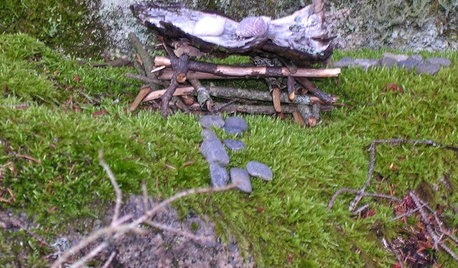Something new (for me)
todancewithwolves
13 years ago
Related Stories

HOUSEPLANTSOrchids 101: Try Something Different With Dendrobiums
If you’re looking for something out of the ordinary, these orchids may be a good choice
Full Story
LIVING ROOMSA Little Something Extra for Your Fireplace
Warm up your fireplace and mantel with color, sparkle, shine — or something unexpected
Full Story
COLORReady to Try Something New? Houzz Guides to Color for Your Kitchen
If only mixing up a kitchen color palette were as easy as mixing batter. Here’s help for choosing wall, cabinet, island and backsplash hues
Full Story
ORGANIZINGSomething Wicker This Way Comes
Store your stuff neatly and easily in any room with stylish, versatile baskets
Full Story
FUN HOUZZSomething a Little Different: Fairy Houses
Miniature abodes crafted for otherworldly creatures capture the imagination
Full Story
KITCHEN DESIGNNew This Week: 3 Modern Kitchens With Something Special
Looking to make your kitchen feel unique? Look to these spaces for inspiration for tile, style and more
Full Story
DECORATING GUIDESRoom Doctor: 10 Things to Try When Your Room Needs a Little Something
Get a fresh perspective with these tips for improving your room’s design and decor
Full Story
DECORATING GUIDESRoom of the Day: Something for Everyone in a Seattle Family Room
Family members downsize to a home that will shorten their commutes and give them more time together — much of it spent in this room
Full Story
HOUZZ TOURSMy Houzz: An Art-Filled Austin Home Has Something to Add
Can a 90-square-foot bump-out really make that much difference in livability? The family in this expanded Texas home says absolutely
Full Story
STUDIOS AND WORKSHOPS8 Rooms That Say 'Let's Make Something'
Stock up on ideas for craft room storage and workspaces from deluxe home workshops
Full Story






runmede
todancewithwolvesOriginal Author
Related Professionals
Lyons Landscape Architects & Landscape Designers · Palm Springs Landscape Architects & Landscape Designers · Tempe Landscape Contractors · Long Branch Landscape Contractors · Parkland Landscape Contractors · Paterson Landscape Contractors · Reedley Landscape Contractors · Rio Linda Landscape Contractors · Peoria Fence Contractors · Collierville Fence Contractors · Hull Fence Contractors · Goulds Window Contractors · Lansdowne Window Contractors · Opa Locka Window Contractors · Seattle Window Contractorsrunmede
ladobe
todancewithwolvesOriginal Author
ladobe
susanlynne48
todancewithwolvesOriginal Author
todancewithwolvesOriginal Author
ladobe